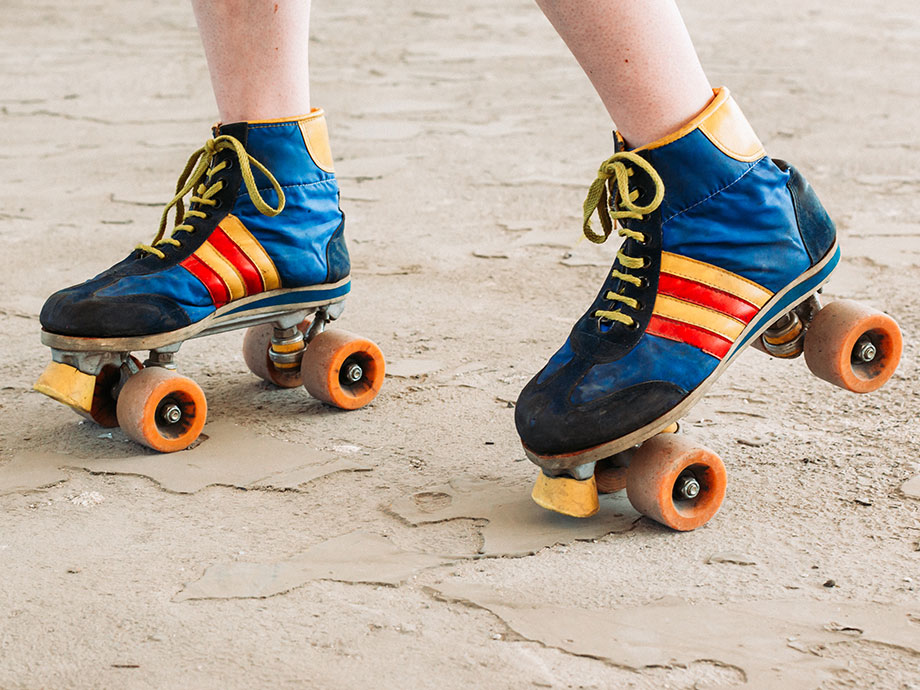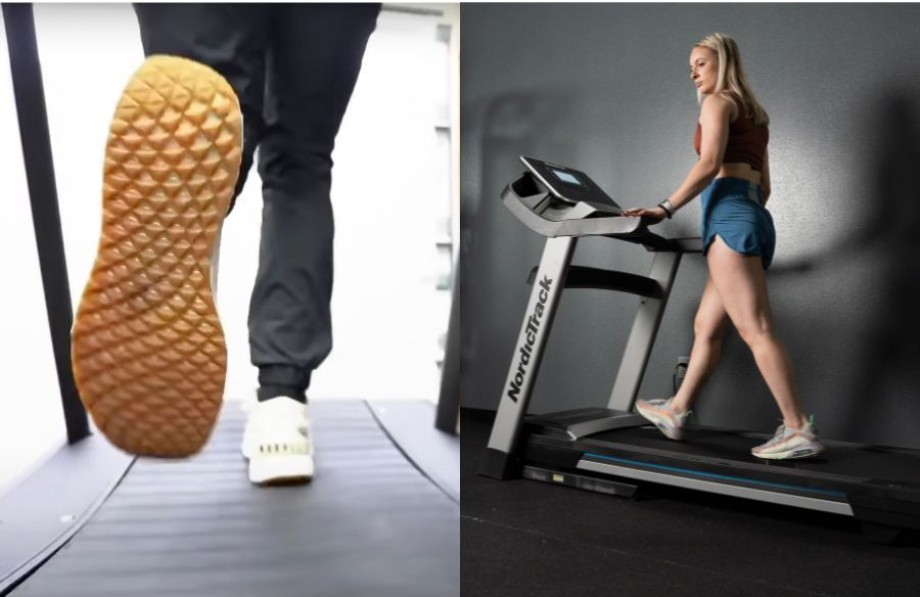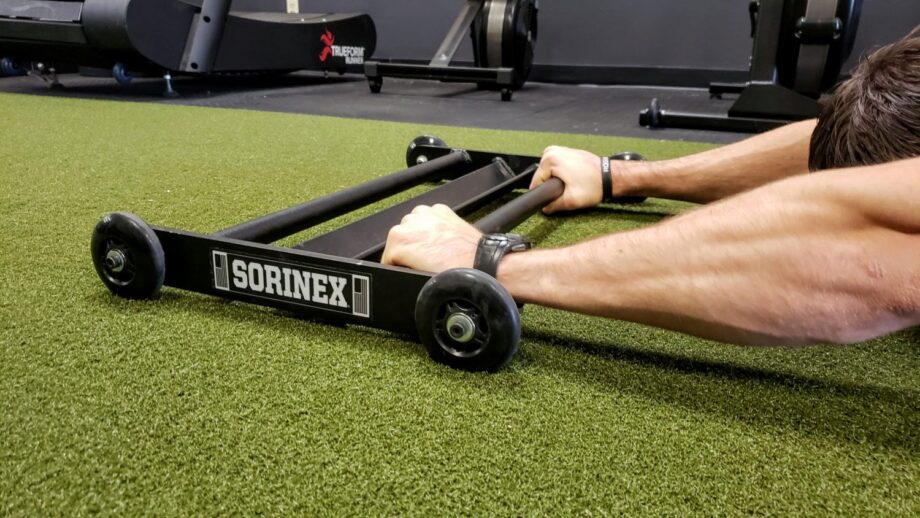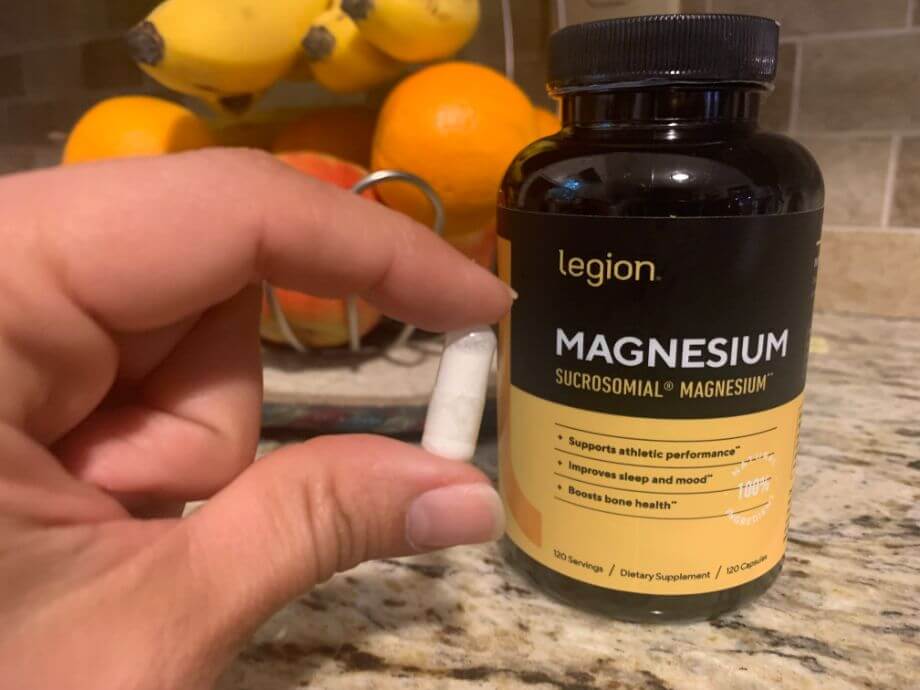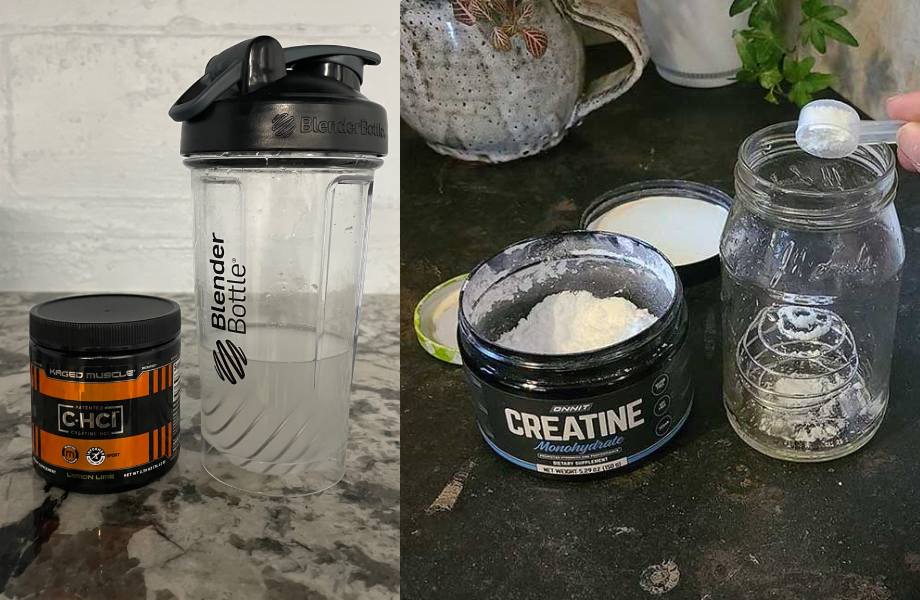Is roller skating good exercise? The short answer is, yes. Roller skating can absolutely raise your heart rate. It gets bonus points if it’s something you enjoy and will do regularly, too. The number of calories you burn will vary by your speed, weight, and fitness level, but roller skating can compete with other popular exercises when it comes to calorie burn.
Roller skating works lower-body muscles while activating your core to maintain stability. It’s also an activity you can enjoy as part of a group or on your own. However, there are some risks that make skating less ideal for some athletes. Keep scrolling to get the details on calorie burn, strength, balance, and ways to protect yourself when you’re gliding down the street.
How Many Calories Can You Burn While Roller Skating?
Calorie burn varies by weight, fitness level, and, in the case of roller skating, speed. Check out the chart below for the calorie burn based on your skating intensity (speed) and weight, according to the American Council on Exercise’s Physical Activity Calorie Counter1.
| Casual* | Fast* | |
| 125 Pounds | 311 | 340 |
| 150 Pounds | 374 | 408 |
| 200 Pounds | 498 | 544 |
There could be a slight variation in calorie burn based on the type of skates you use—quad skates versus inline skates. Inline skates (rollerblades) can generally go faster, typically leading to higher intensity and more calories burned.
What Are the Benefits of Roller Skating?
Roller skating isn’t walking on wheels. It requires a unique blend of strength and balance to push off and glide. Despite this required skill set, skating doesn’t necessarily feel like exercise because it’s often a social sport done with friends or a team. Whether you’re skating solo or with friends, you can reap some serious health benefits.
Build Balance
Roller skating puts heavy demands on your sense of balance and proprioception. Proprioception is your awareness of your body and movement in relation to the space around you. This activity requires a constant sense and shifting of your center of gravity. That balance comes primarily from your core muscles, as found in a 2023 study published in the International Scientific Journal of Kinesiology2. The study found that strengthening the core improves balance and speed.
RELATED: Beginner Core Workout
Low Impact
Unlike running or tennis, roller skating is a form of low-impact cardio, which means it’s gentle on the joints. There are exceptions, like if you’re doing jumps or grinding, but generally, the ankles, knees, and hips don’t have to absorb the repeated impact like you’d experience with running workouts.
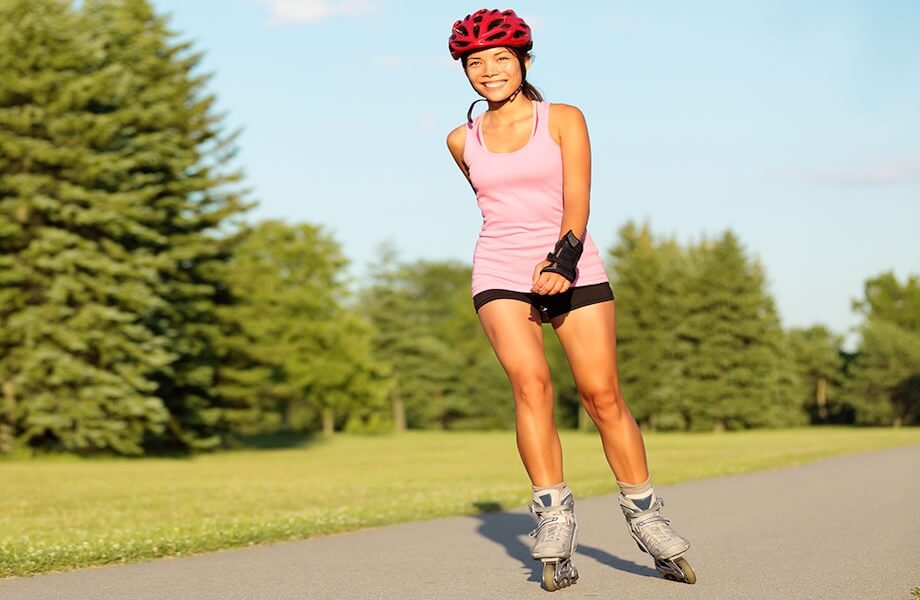
Now, there can still be some stress and impact across your joints, especially if you’re a beginner. The strength and balance requirements may place some strain on your muscles as they become accustomed to the movements. Of course, too, there will be some impact felt during falls, so we recommend wearing the proper protective equipment to help lessen those high-stress situations.
Strengthen the Legs and Heart
A 2022 meta-analysis published in the Journal of Scientific & Technical Research3 found that roller skating improved leg strength, speed, and endurance. And, because it increases your heart rate for a prolonged period, it’s good cardiovascular exercise.
Roller Skating Risks
Every fitness endeavor from heavy strength training sets to yoga poses, trail running, cycling, and more comes with potential risks. Roller skating is no different with limitations related to where you can skate, your required equipment, and (of course) your potential for injury.
Falls
When you involve balance with an activity, there’s always going to be room for gravity to take over. Roller skating requires increased control over your body in order to remain upright and moving forward (or backward). When your positioning is compromised, you could be in for a tumble, which may be disheartening to some beginner athletes. Accordingly, it’s always advised to prepare for inevitable falls by equipping yourself with the proper equipment like a helmet, knee pads, elbow pads, and gloves.
Cost of Entry
Unless you’ve suddenly found your old skates from yesteryear, odds are that you’ll need to make some purchases prior to beginning your roller skating journey. Apart from the all-too-important rollerblades or skates, you’ll also want to invest in protective equipment including a helmet and knee/elbow pads. Costs can also stretch to your roller skating location, as some rinks do charge a daily fee for access to the skating area. If you’re looking to make this a habit, it may be worthwhile to look into membership rates, if available.
General Accessibility
Skating can be a fun way to get outside, but weather and terrain can quickly halt your plans. If you’re in an area with limited access to paved sidewalks or generally flat terrain, it can be challenging to manage your skating routes up and down hills. Plus, you’ll need to check on the weather before setting out for a session. Trust us, there’s few thing more disheartening than arriving at a skate park only to be rained out before your first go-around.
RELATED: Tips for Running in the Rain
Common Roller Skating Mistakes
Roller skating takes practice. While you can certainly lace up your skates and start rolling, you can avoid common mistakes (and potential injury) by taking a few precautions.
Walking Instead of Striding
Many newbie skaters try to walk on their skates, taking choppy, ineffective steps. But wheels work differently. You push off and glide with each “step” rather than picking up your foot and stepping forward. It involves a slight sideways or diagonal push-off to glide on the wheels. At first, your glides might be short, but with time, they’ll lengthen, and you’ll increase speed.
Standing Straight Up
Standing with straight legs on roller skates can put you on your heels, which often ends in windmilling arms and falls on your backside. Instead, keep a slight bend in your knees. This body positioning helps keep your center of gravity closer to the ground, which can make it easier to prevent a fall. Bent knees also give you more control over your whole body, helping you adjust if you lose your balance.
Looking at Your Feet
It’s natural to look at your feet when you first start roller skating. Unfortunately, your body tends to follow where your eyes look, which can lead to loss of balance and potential falls. Additionally, if you’re watching your feet, you cannot watch your surrounding environment, giving room for collisions or skating into obstructions. Instead, try to keep your gaze 10 to 12 feet ahead of you.
Which Muscles Does Roller Skating Work?
Roller skating primarily activates the lower body. However, it requires too much balance for the upper body to slack off. So, while not exactly a full-body workout, roller skating requires strength in other areas, too.
- Gluteus medius: The glute med4 (along with the glute max) stabilizes the rotation of the pelvis. It’s used in the push-off and propulsion stage of your stride/glide.
- Gluteus maximus: The largest glute muscle works with the glute med to push off and propel the body forward while skating. This muscle is primarily where you get your power and speed while skating.
- Abdominals: Roller skating won’t give you a six-pack, but you need strong abdominals5 to maintain your balance. Over time, you’ll build core muscle strength and better balance. Building core strength outside of your skating time can get you moving faster, too.
- Quadriceps: The quads6 are used to straighten your legs, which is an integral part of pushing off while you glide. They’re also activated as you bend your knees to maintain balance.
The hamstrings get an honorable mention, as well. They’re not among the super-involved muscle groups, but your body is an interconnected machine, and your hammies aren’t entirely left out of this activity.
RELATED: Best Hamstring Exercises
Where Should You Roller Skate?
You’ve got two options for roller skating—inside at a roller rink or outside on concrete, like at a skate park or along a paved trail. Your choice of location will affect your skate choice. Inside skates have softer wheels to better grip a polished floor. Outdoor skates have harder, less forgiving wheels. While you can use either type in either location, you’ll get better performance and speed with the right kind of skates.
Rinks have the benefit of renting skates and smooth surfaces on which to skate. They’re also a relatively controlled environment. However, during peak hours, you could be dodging fellow skaters.
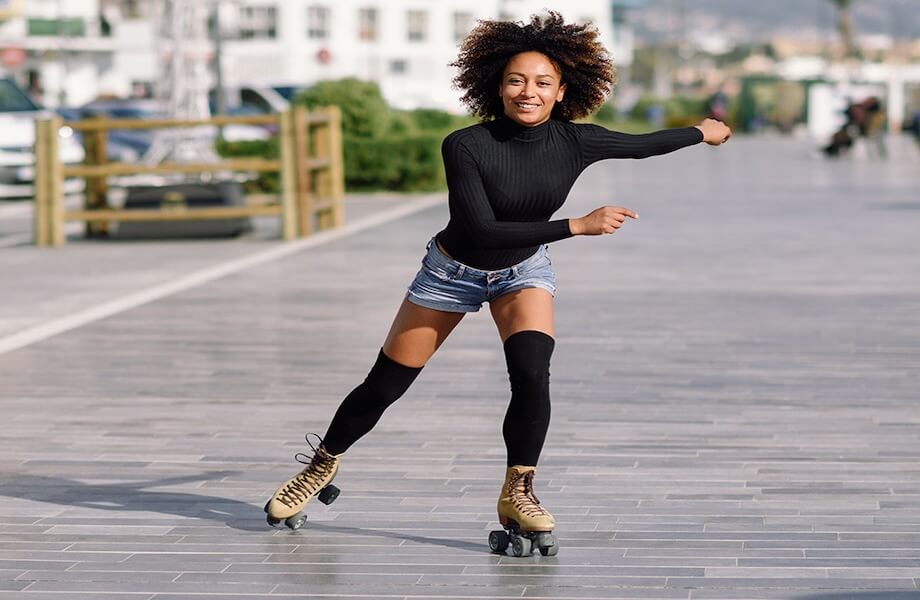
Roller skating outside requires an awareness of your surroundings in order to watch for pedestrians, bikers, and other roller skaters and bladers. If you’re on a sidewalk that crosses a road, you’ll also need to watch for vehicles. Always assume that drivers don’t see you to be on the safe side. Outdoors, you’ll also have to watch for cracks in the sidewalk, rocks, and sticks that could stop your wheels and cause a fall.
Is Roller Skating Worth It?
Roller skating can be a fun, effective form of aerobic exercise with potential to grow your social networks and improve your mental health, but like any fitness activity, not everyone will want to take part. Below are a few groups we feel could flourish in roller skating along with a handful of camps that may be better served with a different activity of choice.
Great For:
- Athletes with a confident sense of balance
- Those looking to learn a new skill set or revive a nostalgic activity
- Individuals wanting an exercise discipline with built-in potential for social interactions
Not Recommended For:
- Those with limited access to skating environments like a rink or outdoor park
- Athletes with inadequate balance or those susceptible to falls
- People looking to tailor their workouts toward strength training rather than cardio
Roller Skating Safety Tips
Gliding on wheels is exhilarating but becomes less so once you’ve taken a fall or two. You can’t avoid every fall, but you can be smart about your skating choices.
Wear Protective Gear
A helmet, elbow pads, wrist guards, and knee pads can protect vulnerable areas. They can’t prevent all injuries, but protective gear can lessen the damage so that a few bumps and bruises are your only injuries.
Wear the Right Skates (Wheels)
Wheels designed for indoor skating are softer and meant for smooth, polished floors. They provide a slight grip that outdoor skates lack. If you use them outside, they can slow you down, and outdoor surfaces will chew through the wheels faster.
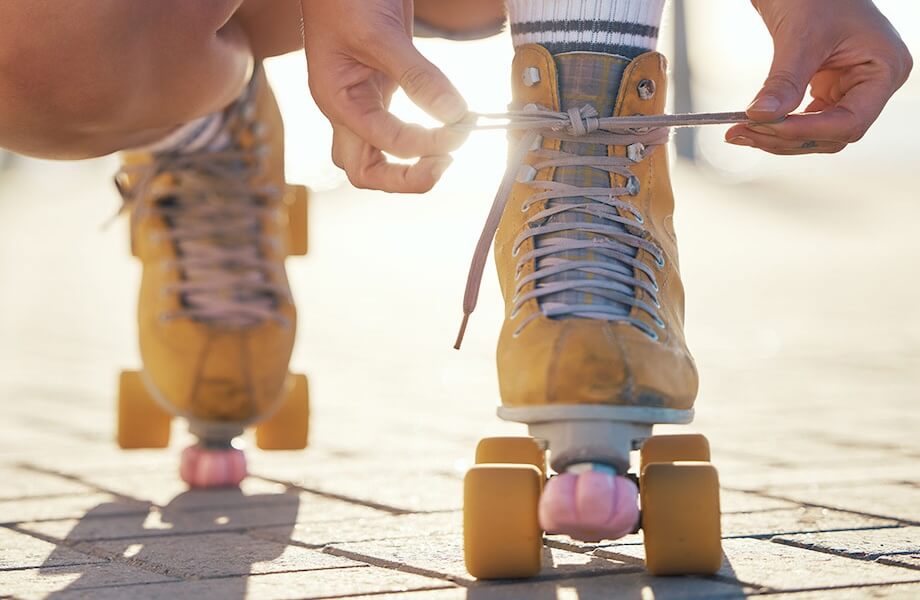
Outdoor wheels are harder and more durable on textured outdoor surfaces. They’re more difficult to control on a smooth indoor surface. The right pair of skates and wheels for the environment can prevent falls and optimize your speed.
Be Aware of Your Environment
Whether on the sidewalk or navigating a skating rink, you need to be aware of your environment. At the rink, you’re primarily keeping an eye on other skaters. Watch out for children and beginners who might not have good control. The same goes for skating outside. Keep an eye on pedestrians, cars, bikes, and animals that might dart in your path.
Follow Skating Etiquette
Skate with the flow of the other skaters when you’re at the rink. Be courteous and kind. Outside, be courteous of other people. Don’t cut them off or speed past without warning.
Is Roller Skating Good Exercise? Final Thoughts
Roller skating can be a fun and effective cardio workout . It can develop lower body strength and balance while also being gentle on your joints (unless you fall, of course). That said, though, roller skating can be riskier than other workout routines like walking, running, or biking. Keep the following in mind if roller skating is in your future:
- Wear protective gear for protection during falls.
- Skating provides a good lower-body workout, so it might take time to develop the strength for longer skating sessions.
- Rent or invest in skates designed for your skating location.
- Have fun!
Is Roller Skating Good Exercise? FAQs
Is roller skating more effective than running?
Roller skating can be a good low-impact form of exercise, but it’s not as effective as running as far as calorie burn or muscle activation. That said, though, roller skating can be a nice reprieve from jogging or other workout modalities with some emphasis on caloric burn and lower-body strength.
Is it better to walk or skate?
If you’re looking strictly at calorie burn, you’ll burn more calories skating than walking. Roller skating will work your lower body and abdominals far more than walking. It’s also a good balance builder. But, if you’re unsteady, walking is the safer exercise.
How does roller skating change your body?
Roller skating strengthens your lower body, particularly the gluteus maximus and gluteus medius. It can also help develop the abdominals and your sense of balance. While physical changes to your body can be subjective, you will likely see performance improvements as your legs and core become stronger, leading to better skating form and boosted endurance.
Is roller skating safe?
All forms of exercise come with risk, but roller skating does have more risk than, say walking, running, or biking. Wear a helmet with elbow and knee pads to cushion falls and protect yourself. Be prepared, especially if you’re a complete beginner. You’ll get in great cardio, but you’ll take a few falls in the process. That’s just part of roller skating.
References
- Physical Activity Calorie Counter. American Council on Exercise. Accessed on October 21, 2024. https://www.acefitness.org/resources/everyone/tools-calculators/physical-activity-calorie-counter/
- Bhardwaj, M., et al. (2023). Correlation between core stability and balance in teenage female roller skaters. International Scientific Journal of Kinesiology. 16(1), 34-41. https://www.sportscience.ba/pdf/br31.pdf#page=34
- Wei, Z., Changquan, W., and Jia, X. (2022). Roller skating promotes the physical health of children and adolescents: Meta analysis. Biomedical Journal of Scientific & Technical Research. 42(1), 33198-33209. DOI: 10.26717/BJSTR.2022.42.006683
- Bongiorno, G., Biancuzzi, H., Dal Mas, F., Fasano, G., & Miceli, L. (2022). Roller speed skating kinematics and electromyographic analysis: A methodological approach. Sports, 10(12), 209. https://doi.org/10.3390/sports10120209
- Ahammed, N., Motimah, B., and Chivate, D. (2018). Effect of core muscle strengthening on roller skating speed in competitive teenage skaters: An experimental study. Saudi Journal of Sports Medicine. 18(3), 133-118. DOI: 10.4103/sjsm.sjsm_27_17
- Bongiorno, G., et al. (2024). The Kinematic and Electromyographic Analysis of Roller Skating at Different Speeds on a Treadmill: A Case Study. Sensors. 24(17), 5738. https://doi.org/10.3390/s24175738




